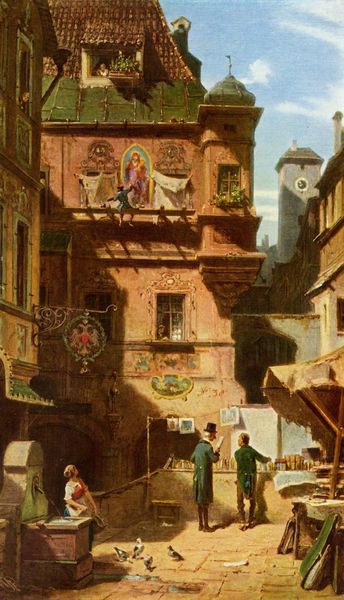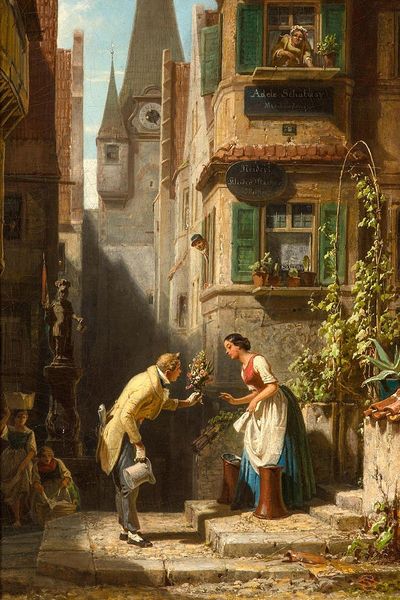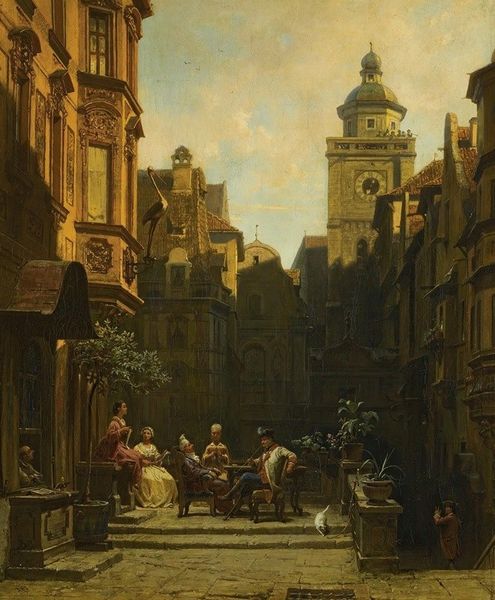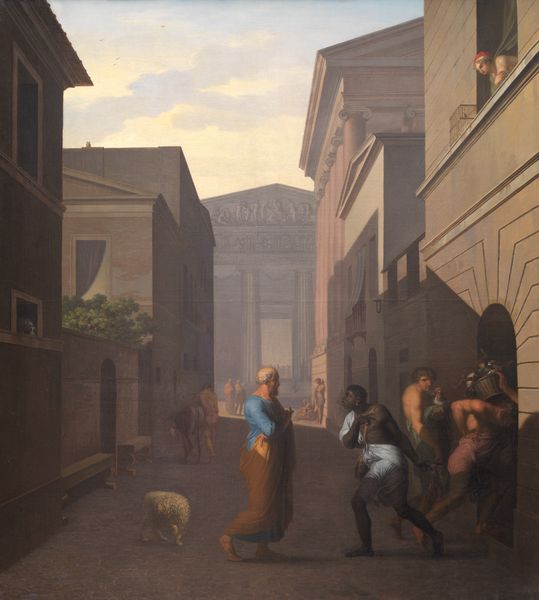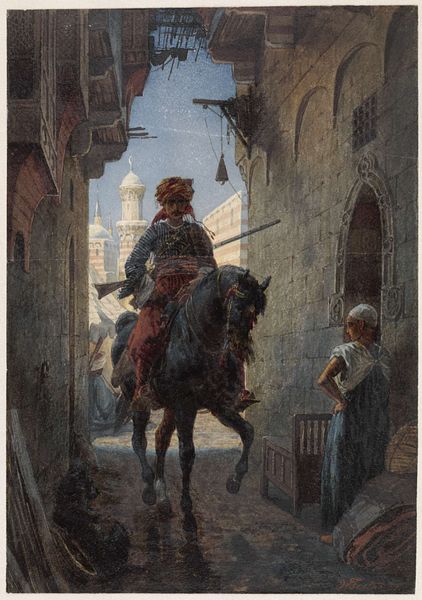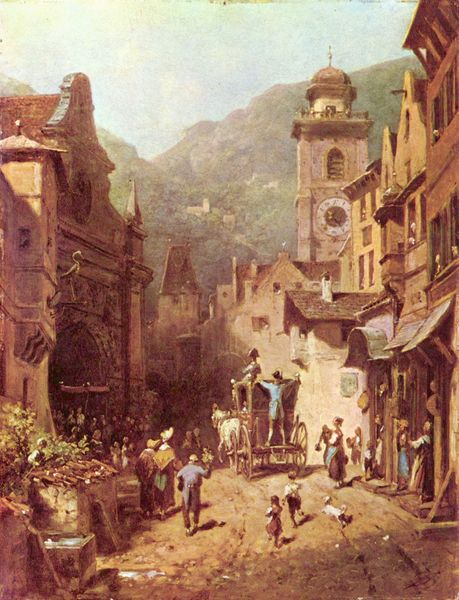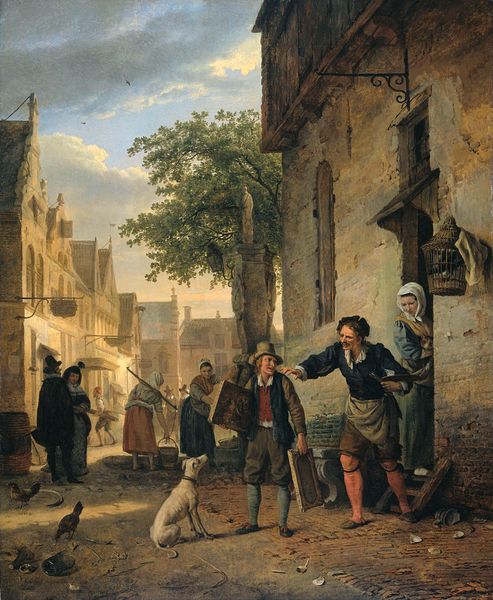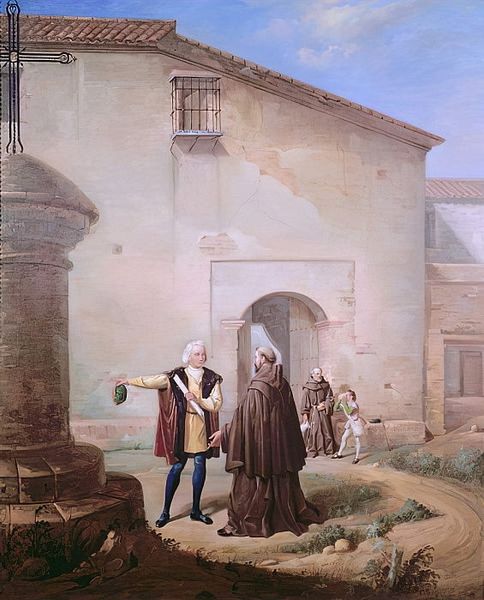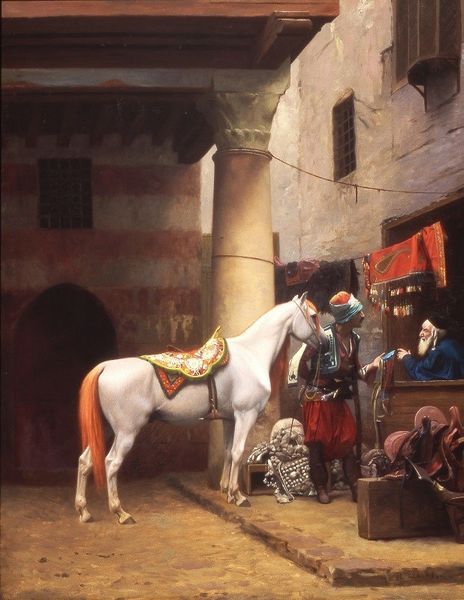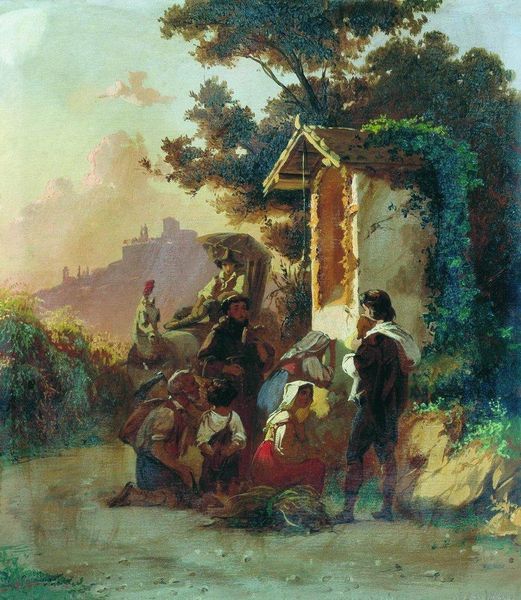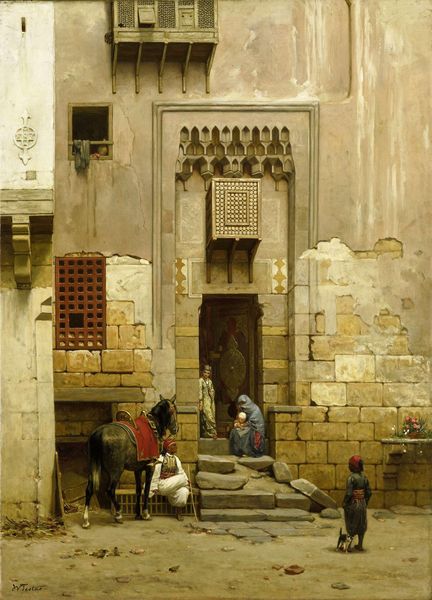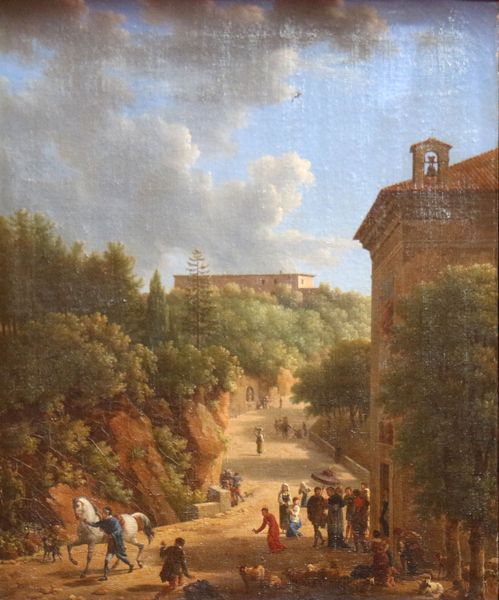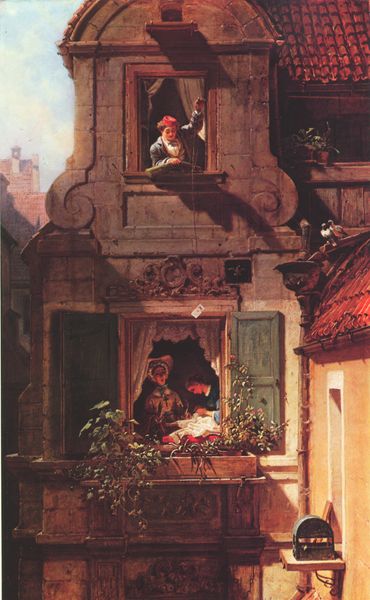
Dimensions: 54 x 32 cm
Copyright: Public domain
Curator: Carl Spitzweg’s "He Comes," created around 1870, gives us a glimpse into a quiet moment in a seemingly timeless European city. The piece, realized with oil paint, invites viewers into its gentle, almost dreamlike, embrace. Editor: It’s a cozy scene. My initial impression is dominated by the materiality of the old buildings and the textures created with the oil paint. I see the cobblestone, the worn building façades, the soldiers’ stiff uniforms... it speaks of the daily grind rendered into something almost idyllic. Curator: Indeed. The Romantic era heavily influenced Spitzweg, shaping not just the visual language but the deeper cultural significance. Romanticism elevated emotion, celebrated everyday life, and gave importance to common folk and to an idyllic life far removed from industrialized cities. We can analyze Spitzweg's contribution through this specific Romantic lens, including its role in reflecting, critiquing, or celebrating prevailing socio-political ideologies. Editor: You can practically smell the stone and polish, can't you? I want to touch the textured canvas to see what other traces remain of the act of painting, to know how the material was applied and transformed. The buildings’ arrangement in the composition reveals the conditions under which the artisan guilds made use of material availability and craftspeople skills, emphasizing that all arts and architecture emerge from specific processes and places. Curator: Very interesting! Spitzweg made several paintings that explore the ordinary lives of people in the streets of German towns. This piece captures a military contingent being greeted, or perhaps merely observed. The specific type of military and dress give it historical character. Consider how institutions and individuals throughout history have harnessed such scenes to project certain ideas or maintain the status quo. Editor: Right, you can see the class distinctions in sharp relief. I’m wondering where these cobblestones come from, who laid them down, and how they shaped the circulation of bodies and commerce across this town square? Labor is embedded into this very physical rendering. I’m interested in unpacking these socio-economic contexts of the town based on his construction and pictorial language. Curator: Spitzweg’s skill lies in capturing the essence of daily life with warmth and charm. His works serve as an interesting insight into 19th-century European society, including urbanity and what it meant to the individuals dwelling within it. Editor: For me, the charm derives from the tangible sense of material process. This is where meaning is forged and encoded. Curator: Agreed. It’s that blend of tangible details and overarching themes that continue to draw viewers into the artwork. Editor: It really causes me to consider labor as an integral component to even our idealized imaginings.
Comments
No comments
Be the first to comment and join the conversation on the ultimate creative platform.
